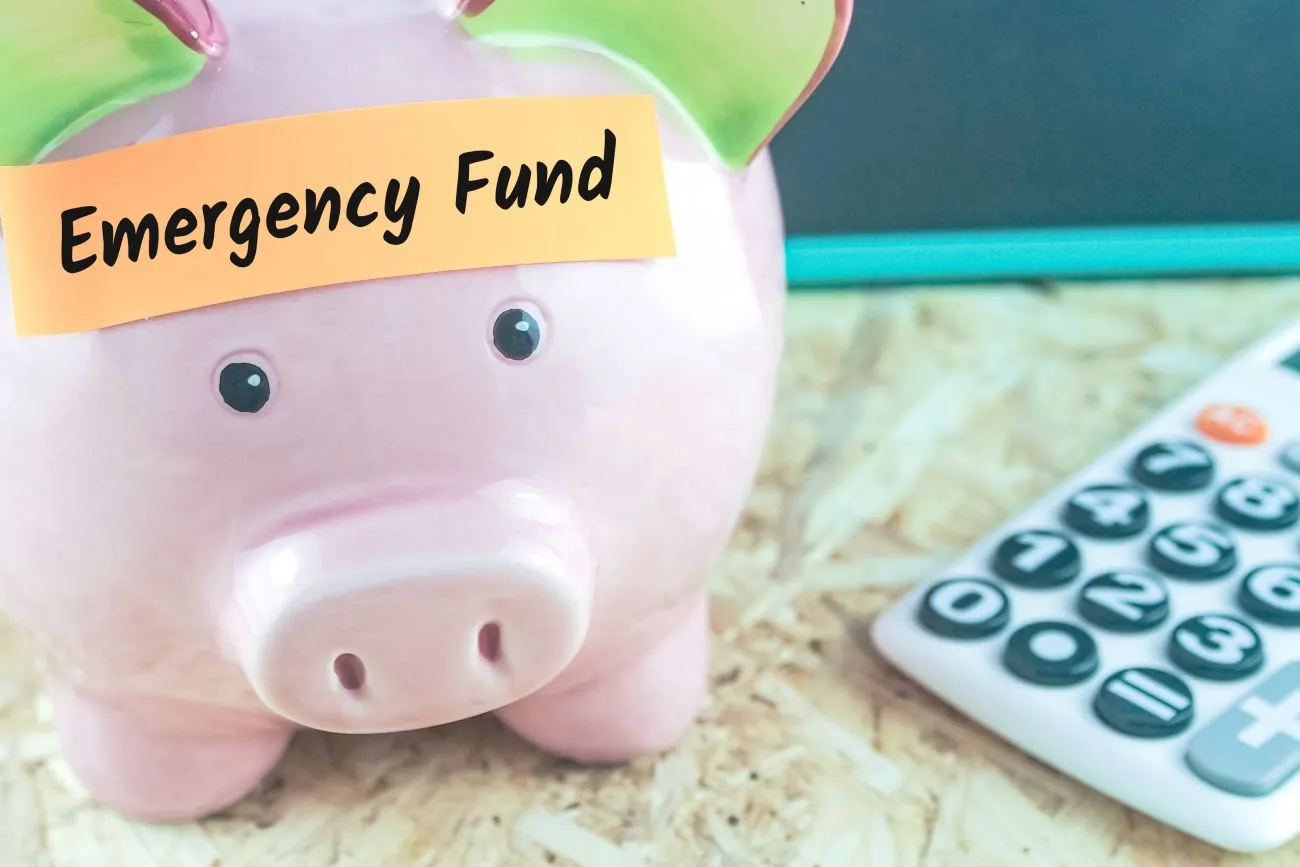Life is unpredictable – cars break, jobs end, health issues arise. Without cash savings, these emergencies cause huge money stress. But having a rainy day fund means freedom from worry. You handle life’s curveballs calmly.
An emergency fund lets you overcome obstacles easily. No more living paycheck-to-paycheck or going into debt. Money troubles disappear when you have backup savings.
The average UK emergency savings is £17,365. But shockingly, 27% of young adults aged 18-24 have just £1,000 or less saved for unexpected costs. This shows the need to save more towards the fund.
Start small if needed, but start saving today! Even weekly builds a mini-cushion over time. Once that safety net grows, major setbacks don’t financially devastate you.
Rule of Thumb Guidelines
What if you unexpectedly lose your job? What if sudden medical bills arrive? Build an emergency fund as insurance against money disasters. The general rule of thumb: Save enough to cover 3-6 months of basic living expenses.
Why 3-6 Months is a Smart Target Range?
Saving just 3 months’ worth acts as a starter emergency fund. It buys you room to breathe if income unexpectedly stops. But 6 months provides much better protection. With half a year’s living costs saved, you avoid panic. You have adequate time to job hunt without stressing about bills. The 3-6 month range balances enough savings without going overboard.
Where Should You Keep Emergency Savings?
Simple savings accounts make great emergency funds. The money remains safe, liquid, and separate from daily spending. Consider online high-yield accounts to earn extra interest. If lacking enough savings for an emergency, personal installment loans provide another option but should be a last resort. Only consider if you have a sound budget and payoff plan.
Assess Your Unique Circumstances and Adjust Target
While 3-6 months is the general benchmark, your ideal emergency fund depends on your situation. If self-employed or millions in debt, aim higher, like 6-12 months’ expenses. With very low monthly costs and a stable job, 3 months may suffice. Regularly revisit and adjust savings targets as life changes.
Factors Influencing Your Emergency Fund
Do you have a steady, secure job? Good! You can likely get by with a smaller emergency fund of 3-4 months’ expenses. But if your work situation feels shaky or unpredictable, boost that cash buffer to 6 months or more.
Being self-employed or in a volatile industry? An 8-12 month fund provides better protection if work dries up unexpectedly. Consider your career’s ups and downs when setting your savings target.
Your Health Situation Drives Emergency Fund Size
Generally healthy with affordable insurance? Great! A standard 3-6 month emergency fund may suffice. But those with chronic conditions or high health costs should supersize their rainy-day stash. Build up 6-12 months’ savings minimum to handle unpredictable medical bills and care.
Dependents and Family Impact Emergency Needs Too
Single with no kids? A 3-6 month fund is typical. But if supporting a spouse, kids, or elderly parents, you’ll want at least 6 months banked for emergencies. More mouths to feed requires a bigger backup plan.
When Emergency Savings Fall Short
Sometimes, emergencies strike before you’ve saved enough like a £5,000 repair needed when you only have £2,000 saved. In cases where your emergency fund falls short, 6-month loans can provide a temporary stop-gap solution. But only use it if you can responsibly repay the loan within 6 months. And rebuild depleted savings once the crisis passes.
Here’s a short table on the factors influencing emergency fund needs:
| Factor | Emergency Fund Target |
| Stable job | 3-4 months’ expenses |
| Unstable/Self-employed job | 6-12 months’ expenses |
| A healthy, good insurance | 3-6 months’ expenses |
| Chronic health issues | 6-12 months’ expenses |
| No dependents | 3-6 months’ expenses |
| Supporting Family | 6+ months’ expenses |
UK households deposited £0.3 billion in July 2023, but August saw zero net deposits as withdrawals matched inflows. This downturn contrasts sharply with higher deposit inflows in September and October 2022, indicating potential financial strain for many families currently.
Calculating Your Ideal Emergency Fund
A super steady job? Save just 3 months’ costs. Job insecure or self-employed? Bulk up to 6-12 months’ expenses. More unstable work means needing a fatter safety net.
Health Issues Impact Your Safety Fund Needs
Healthy as a horse with great insurance coverage? 3-6 months’ savings is probably enough. But have ongoing medical needs? Better stockpile 6-12 months’ worth to handle surprise health costs safely.
Family Dependents Raise Your Emergency Requirements
Single and solo? A compact 3-6 month fund works. But if supporting a spouse, kids, or elders, pump that up to at least 6 months saved. More loved ones relying on you means needing more backup bucks.
Tally Up Your Unique Monthly Musts
To calculate your ideal emergency stash, list out:
- Rent/mortgage payment
- Groceries and utilities
- Car payments and insurance
- Minimum loan payments
- Other essentials like medications
Multiply that total by 3, 6, or 12, depending on your personal situation outlined above. That’s how much you really need for your customised emergency cushion.
Example Emergency Fund Need Calculations:
| Factor | Monthly Musts | Emergency Fund Target |
| Single, stable job, healthy | £2,000 | £6,000 – £12,000 |
| Family of 4, shakier employment | £5,000 | £30,000 – £60,000 |
| Self-employed with health issues | £3,500 | £42,000+ |
A worrying 65% of people admit their emergency fund wouldn’t last three months before needing to borrow money to cover costs. If the need for the loan is for the long term then they take out loans like long-term loans or 12-month loans.
Ways to Build Your Emergency Fund
Cut Costs to Supercharge Saving Abilities
Brew coffee at home, pack lunches, and cancel unused memberships. Any spending reductions free up extra cash to stash away. Get thrifty and aggressive about saving.
Emergency Fund Goals by Income Level
Your current income impacts how quickly you can build emergency reserves. Here are reasonable targets based on take-home pay:
| Annual Income | Target Emergency Fund | Monthly Savings Needed |
| £25,000 | £4,000 – £8,000 | £85 – £165 |
| £50,000 | £8,000 – £16,000 | £165 – £330 |
| £75,000 | £12,000 – £24,000 | £250 – £500 |
| £100,000 | £16,000 – £32,000 | £335 – £665 |
For lower incomes, even setting aside £25/week helps. Those earning more can (and should) save more aggressively each month to reach their higher emergency fund goal faster.
Conclusion
An emergency fund acts as your financial safety net. Even small savings help cover minor bumps in the road. As your rainy-day stash grows, bigger emergencies become manageable, too. Don’t delay – start building your emergency fund immediately!
Tighten your budget, open a separate savings account, and automate transfers. Before long, you’ll have a cushion providing peace of mind. Life keeps moving with or without you ready. Choose to get prepared financially.





